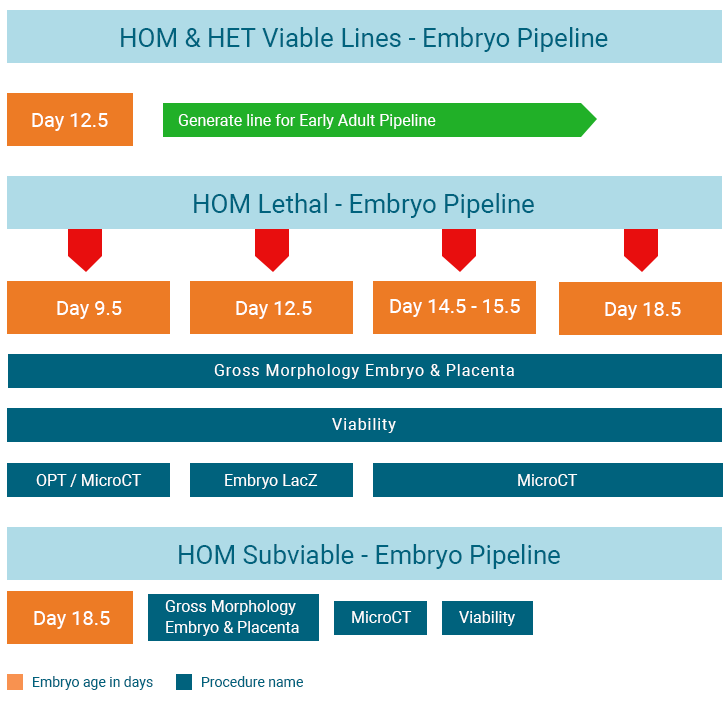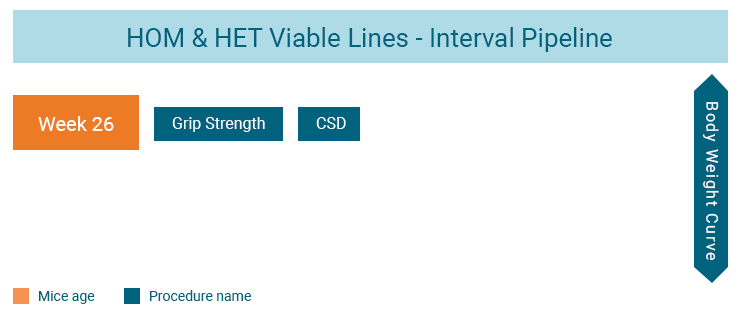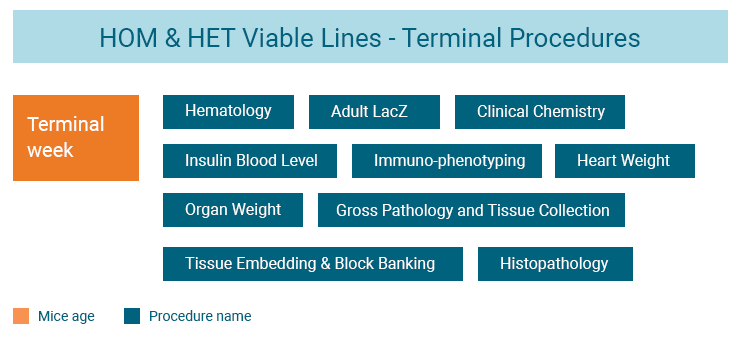The IMPC has 21 international phenotyping centres who use high throughput pipelines to phenotype knockout mouse strains. These centres are generating homozygous knockout mouse strains for every protein coding gene in the mouse genome; producing 7 males and 7 females per gene.
These 14 mice will enter the first test, viability, at the pre-weaning stage. Then:
- When the homozygous mice are viable, the animals are phenotyped following the procedures as indicated in the Early Adult pipeline.
- When the homozygous mice are not viable, additional homozygous mice will enter the embryo pipeline and the heterozygous mice, when viable, will be phenotyped following the Early Adult pipeline
- Selected mouse strains will be aged to enter the Late Adult pipeline.
Help: Some language used throughout the IMPC website may have specific meaning within this project. View our glossary for a list of definitions.
Key information about our data
- Sample Sizes: Roughly 14 homozygous knockout mice (7 female, 7 male) are phenotyped for each gene
- Wildtype baselines: Wildtype mice are continually tested using the same protocols to provide baseline “normal” values
- Multiple Data Types: Phenotype parameters can be continuous data (e.g. cholesterol levels) or qualitative value (e.g. presence or absence of cataracts). Additionally, images (e.g. X rays, echocardiograms, lacZ staining, histology) are collected as part of the protocols
- Ontological Associations: Statistical analysis is performed to identify outlier values. These outliers are then annotated with terms from the mouse phenotype ontology, e.g. high circulating cholesterol.
The IMPC Pipeline
- Embryo Pipeline: For about 25% of the knockouts there are few or no homozygous animals identified at weaning age (21 days postpartum). In these cases, presumed lethal knockouts are then analysed with timed pregnancies to determine the stage at which lethality occurs. This set of testing is referred to as the “embryo pipeline”.
- Early Adult Pipeline: A range of in vivo phenotyping procedures are carried out from 9 to 15 weeks with weekly body weights from 4 to 16 weeks. Some procedures are mandatory for all centres, assuring key data is provided (see IMPReSS for high level detail). For homozygous viable lines, the homozygote animals are phenotyped as a part of this pipeline; otherwise the heterozygotes are phenotyped.
- Interval Pipeline: The Interval Pipeline marks the halfway point between the Early Adult and Late Adult pipelines. Procedures like Body Weight Curve are continuously tested monthly between the Early Adult and Late Adult pipelines.
- Late Adult Pipeline: For about 10% of genes the mice are aged past 16 weeks and are retested later in life – circa 1 year. This set of testing is referred to as the “adult aging pipeline”. There is variability in the time slots that centres phenotype late adult mice, so we show this in schedule slots instead of age in weeks. The pipeline start age can range from 49 – 70 weeks, since it varies depending on the phenotyping centre’s strategy.
- Terminal Procedures: Terminal procedures are a set of procedures performed on samples collected from the animals at the end of the in vivo pipelines (16 weeks for Early Adult)







